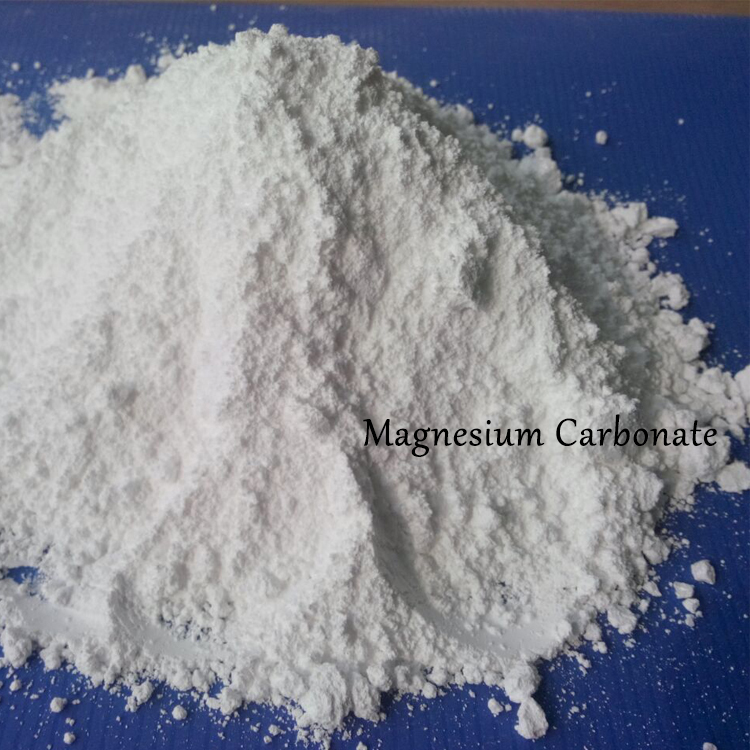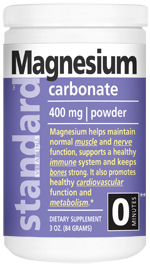


The primary use of magnesium carbonate is the production of magnesium oxide by calcining. For example, in the trihydrate MgCO 3♳H 2O, which molecular formula may be written as Mg(HCO 3)(OH)♲H 2O, the dehydration steps occur at 157 ☌ and 179 ☌ as follows: Mg(HCO 3)(OH)♲(H 2O) → Mg(HCO 3)(OH) The hydrates of the salts lose water at different temperatures during decomposition. However, calcination to the oxide is generally not considered complete below 900 ☌ due to interfering readsorption of liberated carbon dioxide. The decomposition temperature is given as 350 ☌ (662 ☏). This process is important in the production of magnesium oxide. MgCO 3 + 2 HCl → MgCl 2 + CO 2 + H 2O MgCO 3 + H 2SO 4 → MgSO 4 + CO 2 + H 2O Decomposition Īt high temperatures MgCO 3 decomposes to magnesium oxide and carbon dioxide. Like many common group 2 metal carbonates, magnesium carbonate reacts with aqueous acids to release carbon dioxide and water: Mg(OH) 2 + 2 CO 2 → Mg(HCO 3) 2 Mg(HCO 3) 2 → MgCO 3 + CO 2 + H 2O Chemical properties With acids The bicarbonate is then vacuum dried, causing it to lose carbon dioxide and a molecule of water: High purity industrial routes include a path through magnesium bicarbonate, which can be formed by combining a slurry of magnesium hydroxide and carbon dioxide at high pressure and moderate temperature. If magnesium chloride (or sulfate) is treated with aqueous sodium carbonate, a precipitate of basic magnesium carbonate – a hydrated complex of magnesium carbonate and magnesium hydroxide – rather than magnesium carbonate itself is formed:ĥ MgCl 2(aq) + 5 Na 2CO 3(aq) + 5 H 2O(l) → Mg 4(CO 3) 3(OH) 2♳H 2O(s) + Mg(HCO 3) 2(aq) + 10 NaCl(aq) Magnesium carbonate can be prepared in laboratory by reaction between any soluble magnesium salt and sodium bicarbonate: Seventy percent of the world's supply is mined and prepared in China.

Magnesium carbonate is ordinarily obtained by mining the mineral magnesite. References to "light" and "heavy" magnesium carbonates actually refer to the magnesium hydroxy carbonates hydromagnesite and dypingite, respectively. The dihydrate has a triclinic structure, while the trihydrate has a monoclinic structure. Magnesite crystallizes in the calcite structure wherein Mg 2+ is surrounded by six oxygen atoms. All forms of magnesium carbonate react with acids. The anhydrous salt is practically insoluble in water, acetone, and ammonia. Magnesite consists of colourless or white trigonal crystals. All of those minerals are colouress or white. Some basic forms such as artinite ( Mg 2CO 3(OH) 2♳H 2O), hydromagnesite ( Mg 5(CO 3) 4(OH) 2♴H 2O), and dypingite ( Mg 5(CO 3) 4(OH) 2♵H 2O) also occur as minerals. The most common magnesium carbonate forms are the anhydrous salt called magnesite ( MgCO 3), and the di, tri, and pentahydrates known as barringtonite ( MgCO 3♲H 2O), nesquehonite ( MgCO 3♳H 2O), and lansfordite ( MgCO 3♵H 2O), respectively. Several hydrated and basic forms of magnesium carbonate also exist as minerals. Magnesium carbonate, Mg CO 3 (archaic name magnesia alba), is an inorganic salt that is a colourless or white solid. For more guidance, see Wikipedia:Translation.You should also add the template to the talk page.A model attribution edit summary is Content in this edit is translated from the existing German Wikipedia article at ] see its history for attribution. You must provide copyright attribution in the edit summary accompanying your translation by providing an interlanguage link to the source of your translation.If possible, verify the text with references provided in the foreign-language article.

Do not translate text that appears unreliable or low-quality.Machine translation like DeepL or Google Translate is a useful starting point for translations, but translators must revise errors as necessary and confirm that the translation is accurate, rather than simply copy-pasting machine-translated text into the English Wikipedia.


 0 kommentar(er)
0 kommentar(er)
